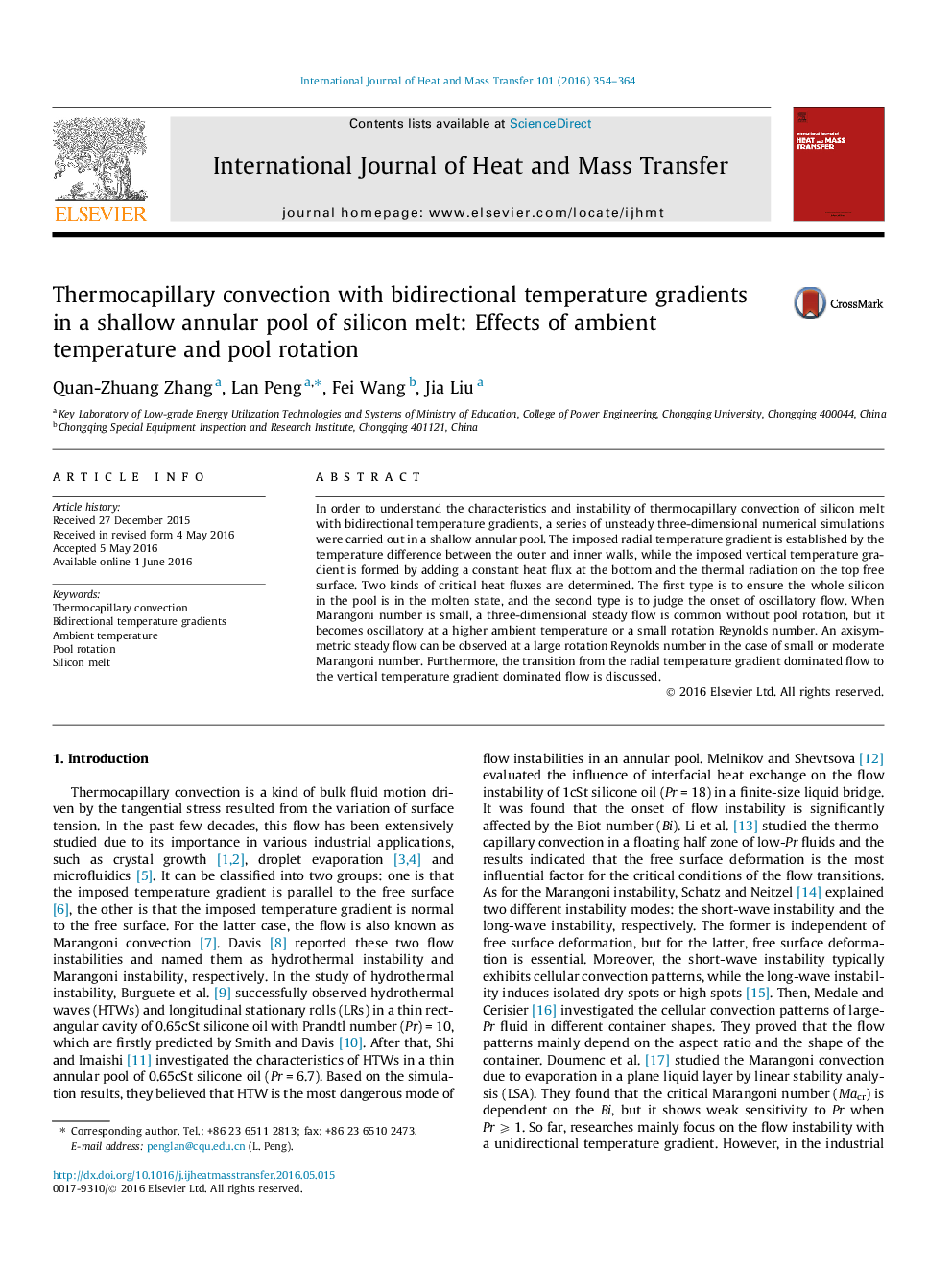| Article ID | Journal | Published Year | Pages | File Type |
|---|---|---|---|---|
| 7055245 | International Journal of Heat and Mass Transfer | 2016 | 11 Pages |
Abstract
In order to understand the characteristics and instability of thermocapillary convection of silicon melt with bidirectional temperature gradients, a series of unsteady three-dimensional numerical simulations were carried out in a shallow annular pool. The imposed radial temperature gradient is established by the temperature difference between the outer and inner walls, while the imposed vertical temperature gradient is formed by adding a constant heat flux at the bottom and the thermal radiation on the top free surface. Two kinds of critical heat fluxes are determined. The first type is to ensure the whole silicon in the pool is in the molten state, and the second type is to judge the onset of oscillatory flow. When Marangoni number is small, a three-dimensional steady flow is common without pool rotation, but it becomes oscillatory at a higher ambient temperature or a small rotation Reynolds number. An axisymmetric steady flow can be observed at a large rotation Reynolds number in the case of small or moderate Marangoni number. Furthermore, the transition from the radial temperature gradient dominated flow to the vertical temperature gradient dominated flow is discussed.
Related Topics
Physical Sciences and Engineering
Chemical Engineering
Fluid Flow and Transfer Processes
Authors
Quan-Zhuang Zhang, Lan Peng, Fei Wang, Jia Liu,
